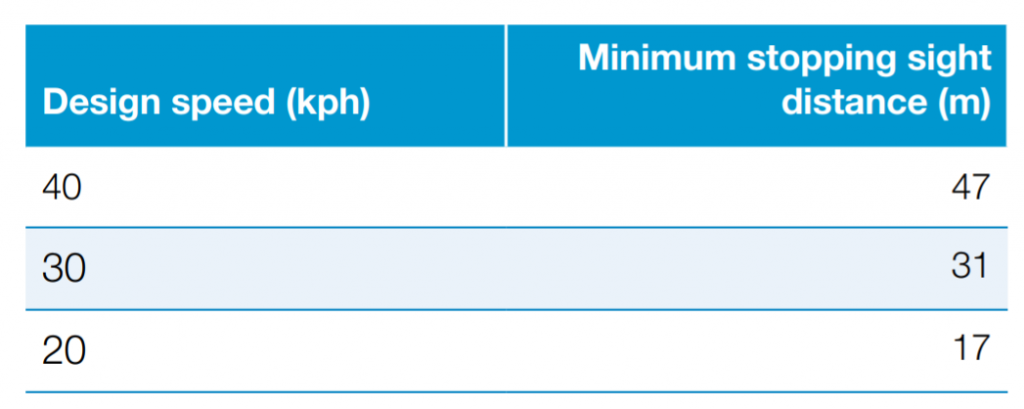Strategy behind the Standard
This is to ensure that there is consistent guidance across all cycle schemes which means that a good standard of safety for those who cycle is maintained.
Visibility regards the required clear space around a junction around a cycle path or track, to ensure that a person who cycles is able assess whether to stop or give way when approaching the junction.
Best Practice Guidance to be used by Essex Highways.
Cycle Infrastructure Design LTN 1/20 – Chapter 5.8
ECC Recommendations
Any change to junction geometry should also take into account the impact on sight-lines, which are needed to ensure adequate visibility at junctions.

The “x” distance is measured from a give way or stop line, back along the centre line of the minor arm. The y distance is the stopping sight distance (SSD) required and is measured on the highway from the centre of the minor arm. The tables below show the minimum x and y distances.


The desirable minimum “x” distance allows two cyclists to observe the full “y” distance and both accept the gap in traffic. Designers should seek to improve visibility along the y distance before reducing the x distance.
An eye height range of 0.8 metres to 2.2 metres for cyclists shall be used when measuring the “y” distance.
The object height shall be taken as 0.26 metres to 2.0 metres when measuring the “y” distance for cycle routes.

Reducing visibility should not compromise cycle safety at priority junctions and a risk assessment should be undertaken to check whether reduced ‘Y’ distances and tighter geometry generally are acceptable from a cycling perspective. There may, for example, be occasions where horizontal deviations to improve cyclists’ sight lines or speed humps should be added on the approach to a crossing, junction or shared-use area.
For further detailed guidance on visibility splays and stopping sight distance, please see the LTN 1/20 Chapter 5.7 & 5.8.
How the Standard should be applied
The guidelines stated above should be used when designing any cycle route in Essex. Only in exceptional circumstances should there be a departure from the standards set above. This standard applies to any new cycle routes created, and when reviewing an existing cycle route which needs updating, if the benefits are deemed sufficient.
